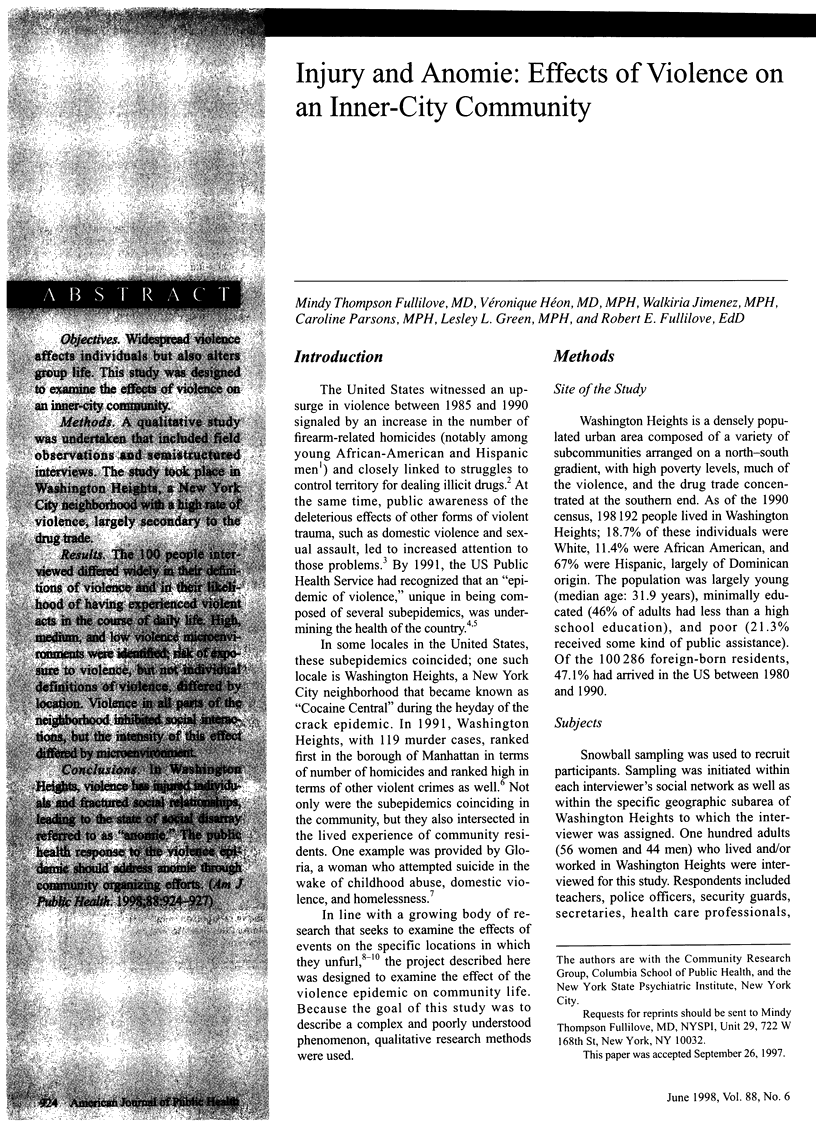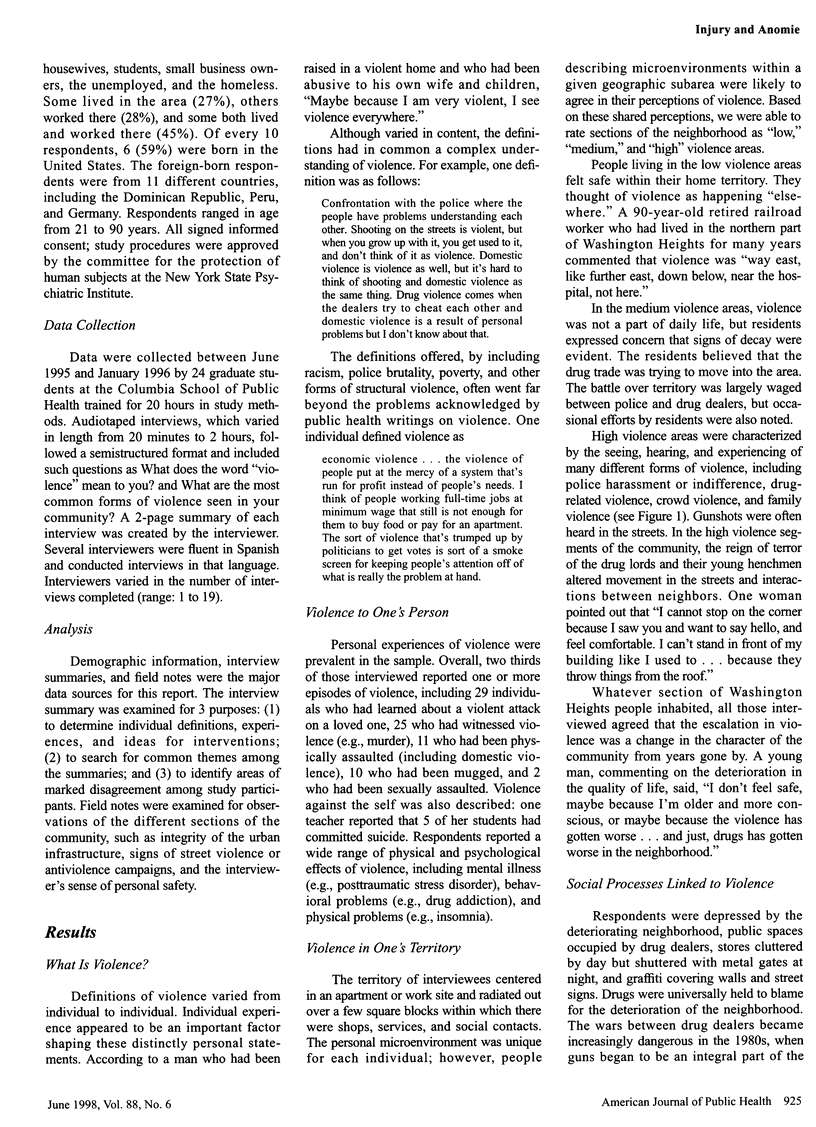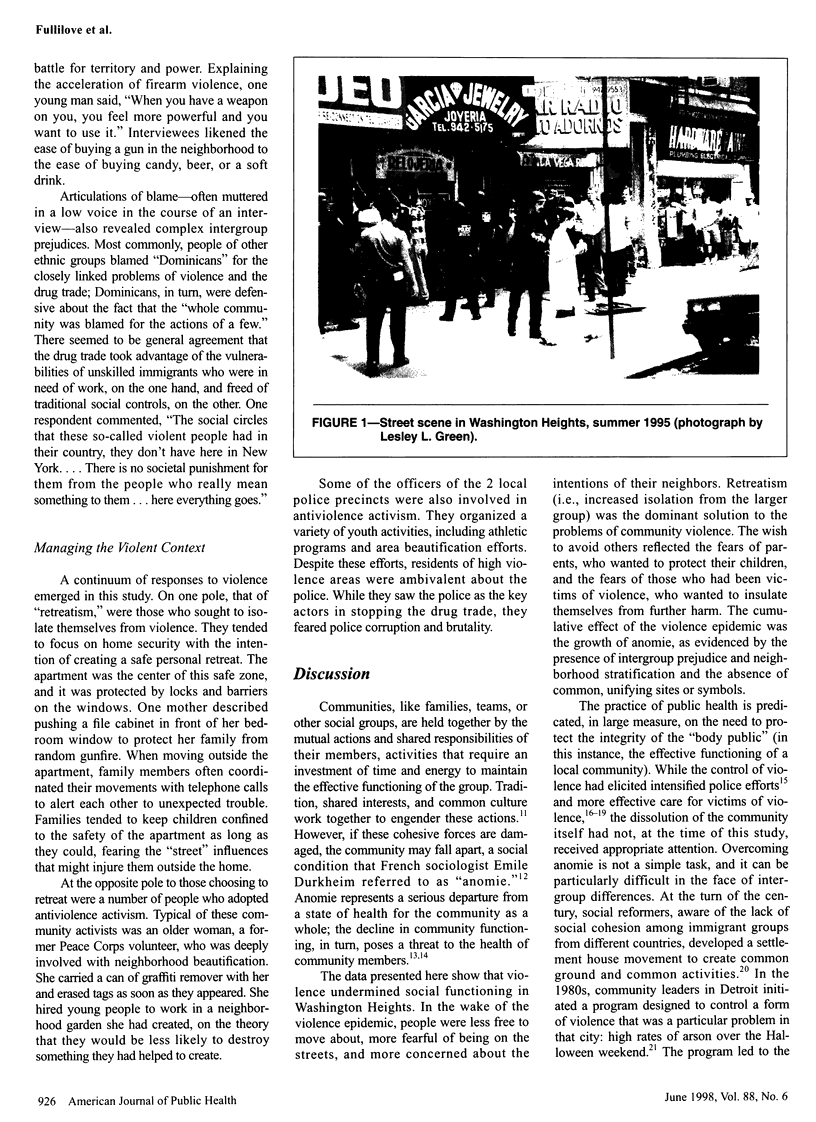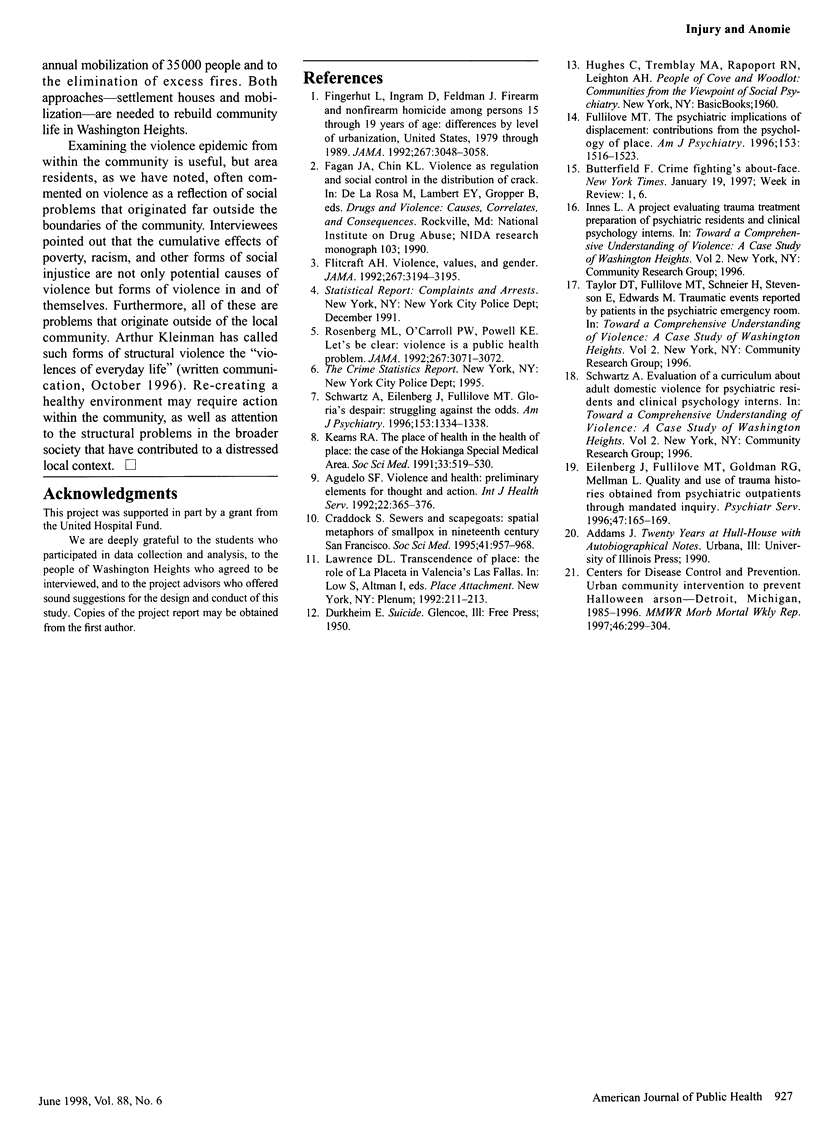Abstract
OBJECTIVES: Widespread violence affects individuals but also alters group life. This study was designed to examine the effects of violence on an inner-city community. METHODS: A qualitative study was undertaken that included field observations and semistructured interviews. The study took place in Washington Heights, a New York City neighborhood with a high rate of violence, largely secondary to the drug trade. RESULTS: The 100 people interviewed differed widely in their definitions of violence and in their likelihood of having experienced violent acts in the course of daily life. High, medium, and low violence microenvironments were identified; risk of exposure to violence, but not individual definitions of violence, differed by location. Violence in all parts of the neighborhood inhibited social interactions, but the intensity of this effect differed by microenvironment. CONCLUSIONS: In Washington Heights, violence has injured individuals and fractured social relationships, leading to the state of social disarray referred to as "anomie." The public health response to the violence epidemic should address anomie through community organizing efforts.
Full text
PDF



Images in this article
Selected References
These references are in PubMed. This may not be the complete list of references from this article.
- Craddock S. Sewers and scapegoats: spatial metaphors of smallpox in nineteenth century San Francisco. Soc Sci Med. 1995 Oct;41(7):957–968. doi: 10.1016/0277-9536(94)00409-m. [DOI] [PubMed] [Google Scholar]
- Eilenberg J., Fullilove M. T., Goldman R. G., Mellman L. Quality and use of trauma histories obtained from psychiatric outpatients through mandated inquiry. Psychiatr Serv. 1996 Feb;47(2):165–169. doi: 10.1176/ps.47.2.165. [DOI] [PubMed] [Google Scholar]
- Fingerhut L. A., Ingram D. D., Feldman J. J. Firearm and nonfirearm homicide among persons 15 through 19 years of age. Differences by level of urbanization, United States, 1979 through 1989. JAMA. 1992 Jun 10;267(22):3048–3053. [PubMed] [Google Scholar]
- Flitcraft A. H. Violence, values, and gender. JAMA. 1992 Jun 17;267(23):3194–3195. [PubMed] [Google Scholar]
- Franco Agudelo S. Violence and health: preliminary elements for thought and action. Int J Health Serv. 1992;22(2):365–376. doi: 10.2190/XE4A-NBNQ-EQ3B-66C5. [DOI] [PubMed] [Google Scholar]
- Fullilove M. T. Psychiatric implications of displacement: contributions from the psychology of place. Am J Psychiatry. 1996 Dec;153(12):1516–1523. doi: 10.1176/ajp.153.12.1516. [DOI] [PubMed] [Google Scholar]
- Kearns R. A. The place of health in the health of place: the case of the Hokianga special medical area. Soc Sci Med. 1991;33(4):519–530. doi: 10.1016/0277-9536(91)90334-9. [DOI] [PubMed] [Google Scholar]
- Rosenberg M. L., O'Carroll P. W., Powell K. E. Let's be clear. Violence is a public health problem. JAMA. 1992 Jun 10;267(22):3071–3072. doi: 10.1001/jama.267.22.3071. [DOI] [PubMed] [Google Scholar]
- Schwartz A., Eilenberg J., Fullilove M. T. Gloria's despair: struggling against the odds. Am J Psychiatry. 1996 Oct;153(10):1334–1338. doi: 10.1176/ajp.153.10.1334. [DOI] [PubMed] [Google Scholar]



